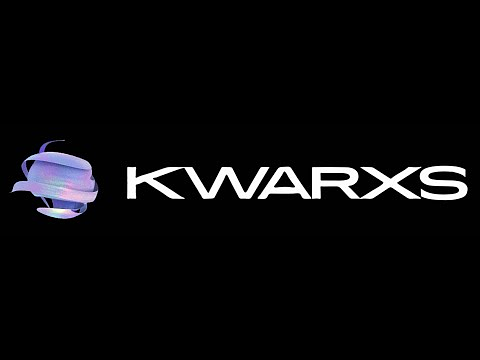
Solar NFTs: KWARXS Aims to Democratize Renewable Energy Investment with Blockchain Tech
Dubai-based KWARXS is tokenizing solar farms with NFTs, offering fractional ownership and opening up renewable energy investment to a wider audience. But can blockchain truly unlock the next wave of green finance?
Solar NFTs: KWARXS Aims to Democratize Renewable Energy Investment with Blockchain Tech
Dubai, UAE – November 6, 2025 – In a move that could reshape access to renewable energy investment, KWARXS, a platform building on the Cardano blockchain, has secured $250,000 in funding to accelerate its mission of tokenizing real-world solar energy projects. The company’s approach – fractional ownership of solar farms via NFTs – aims to democratize access to a traditionally institutional asset class, attracting a new wave of investors to the green energy transition.
KWARXS isn't simply jumping on the NFT bandwagon. The company leverages the transparency and security of blockchain technology to address fundamental challenges in the renewable energy sector: access to capital and investor participation. By breaking down large-scale solar projects into fractionalized NFTs, KWARXS lowers the barrier to entry, allowing individuals to invest in solar energy with smaller amounts of capital than traditionally required.
“The goal isn’t just about NFTs,” explains a source close to the company. “It’s about unlocking access. Historically, participating in large-scale solar projects has been reserved for institutional investors. We’re changing that.”
A Veteran’s Vision
At the helm of KWARXS is Sandro Gonzalez, a renewable energy veteran with over 16 years of experience and a track record of developing over 6 gigawatts of solar capacity globally. His experience, spanning projects in Europe, Japan, and South America, provides a solid foundation for the venture. Gonzalez, who currently leads two solar companies in Spain and Germany, saw a need for innovative financial models to accelerate the deployment of renewable energy.
“Gonzalez brings a unique perspective,” states an industry analyst. “He isn’t a blockchain-first founder; he's an energy professional who sees the potential of blockchain to solve real-world problems.”
Cardano’s Bet on Real-World Assets
KWARXS’s choice of the Cardano blockchain is strategic. Cardano has been actively positioning itself as a platform for real-world asset (RWA) tokenization, emphasizing its energy efficiency, security, and governance. The $250,000 grant from Project Catalyst, Cardano’s innovation fund, underscores the network’s commitment to supporting projects that bridge the gap between the digital and physical worlds.
“Cardano is attempting to differentiate itself from other blockchains by focusing on tangible assets,” explains a source familiar with the Cardano ecosystem. “KWARXS is a key test case for this strategy.”
However, Cardano isn’t alone in this space. Other blockchains, including Ethereum and Stellar, are also vying for dominance in the RWA market. The competition is fierce, and KWARXS will need to demonstrate a clear value proposition to stand out.
Beyond the Hype: A Look at the Tokenomics
KWARXS’s model is relatively straightforward. NFTs represent fractional ownership of a specific solar farm. Revenue generated by the farm – electricity sales, tax credits, etc. – is distributed to NFT holders based on their ownership stake. The company plans to utilize smart contracts to automate the revenue distribution process, ensuring transparency and efficiency.
The security of these smart contracts has been verified through a third-party audit by CertiK, which adds credibility to the project. However, potential investors should still conduct their own due diligence and understand the risks associated with investing in any crypto-based asset.
“The smart contract audit is important, but it's not a guarantee against all risks,” cautions a financial analyst specializing in blockchain investments. “Investors should carefully evaluate the underlying assets and the project’s long-term sustainability.”
Competition and the Growing RWA Landscape
While KWARXS is focusing on fractional ownership of solar farms, it’s entering a crowded market. Platforms like Power Ledger and WePower are already offering blockchain-based solutions for renewable energy trading and peer-to-peer energy exchange. These competitors have a head start in terms of market adoption and brand recognition.
“The RWA space is becoming increasingly competitive,” notes an industry observer. “KWARXS needs to differentiate itself by focusing on a specific niche – fractional ownership of solar farms – and building a strong community around its platform.”
Furthermore, the regulatory landscape for RWA tokenization remains uncertain. Obtaining the necessary licenses and approvals can be a lengthy and complex process. KWARXS is currently preparing for regulatory registration with the Virtual Assets Regulatory Authority (VARA) in Dubai, a move that is seen as crucial for its long-term success.
“Navigating the regulatory environment will be a major challenge for KWARXS and other RWA platforms,” says a legal expert specializing in blockchain regulations. “Clear and consistent regulations are needed to foster innovation and protect investors.”
The Future of Green Finance
Despite the challenges, KWARXS’s vision of democratizing access to renewable energy investment is compelling. If successful, the platform could unlock a new wave of capital for green energy projects and accelerate the transition to a sustainable future.
The $30 trillion RWA market projection highlights the immense potential of this emerging sector. However, realizing this potential will require innovation, collaboration, and a commitment to transparency and investor protection.
KWARXS, with its experienced leadership, strategic partnership with Cardano, and focus on a tangible asset class, is well-positioned to play a leading role in this exciting new frontier of green finance. The next year will be critical as the company navigates the regulatory landscape, builds its community, and demonstrates the viability of its fractional ownership model. The company hopes that its model will prove how blockchain can truly accelerate the energy transition and bring accessible green investment options to a wider audience.
📝 This article is still being updated
Are you a relevant expert who could contribute your opinion or insights to this article? We'd love to hear from you. We will give you full credit for your contribution.
Contribute Your Expertise →